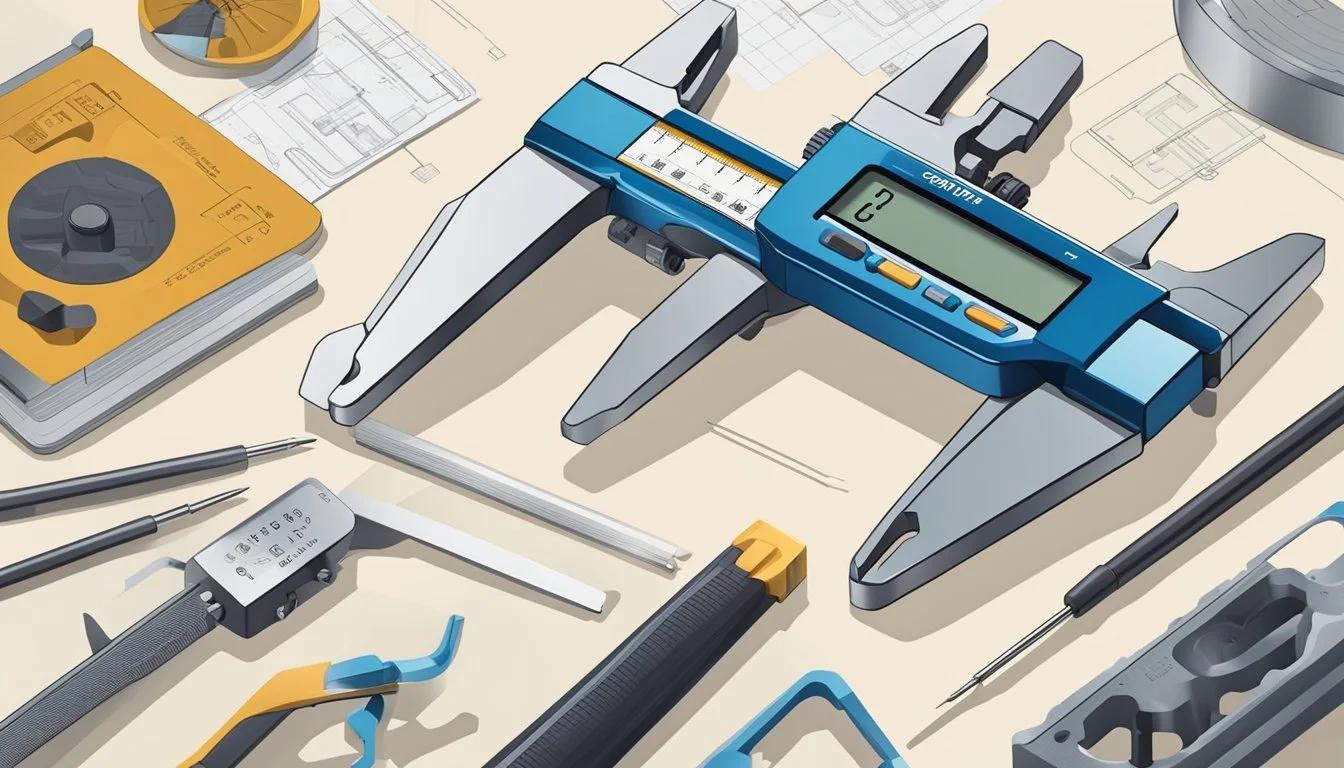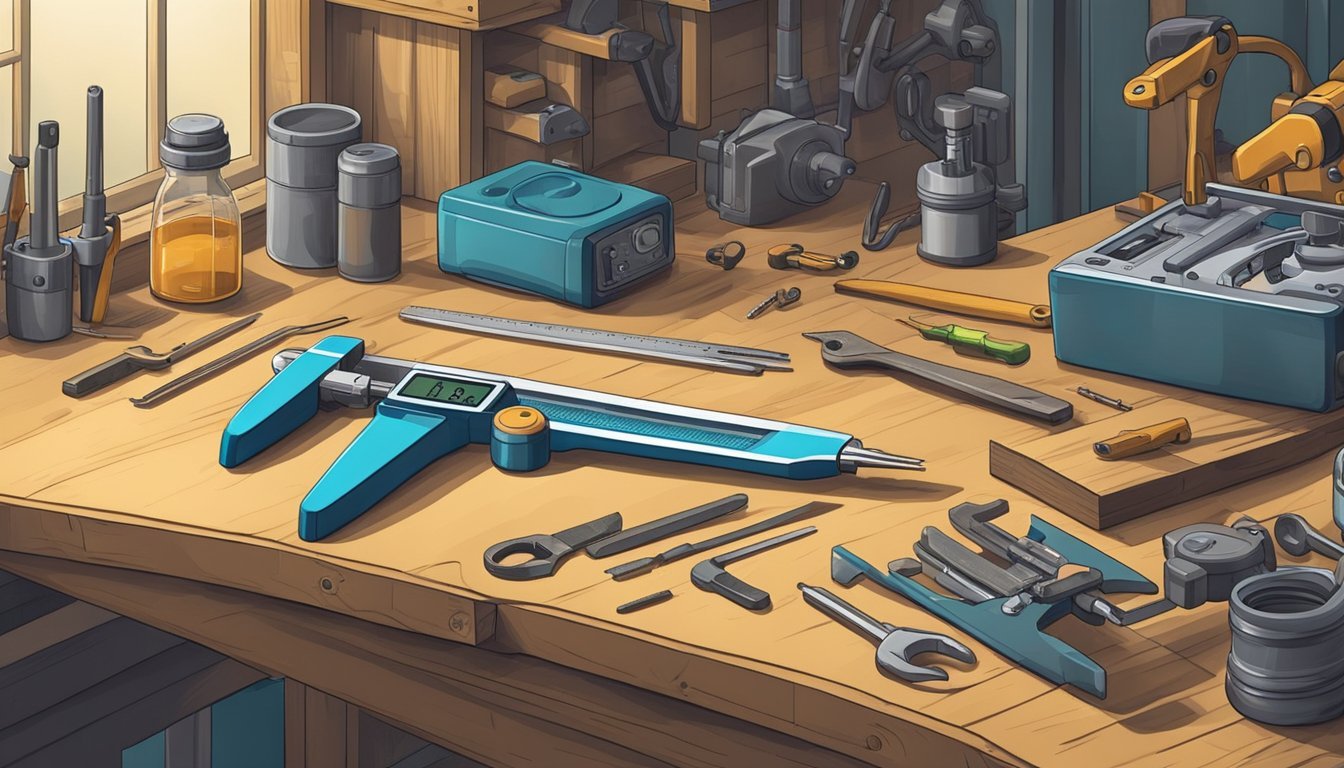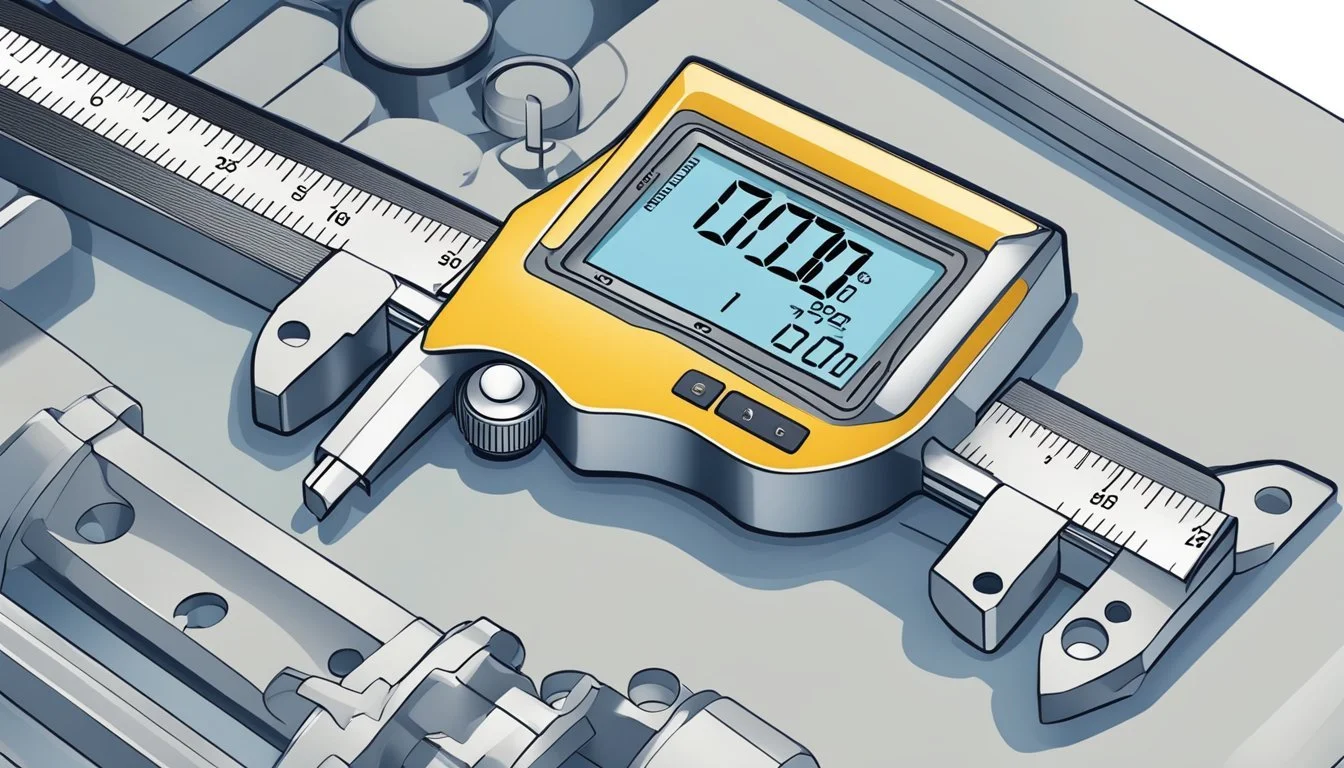The Ultimate Guide to Using Digital Calipers
Ensuring Accuracy in Homestead Machinery Maintenance
Digital calipers have become an indispensable tool in homestead machinery maintenance, providing the precision required to measure parts with accuracy and ease. These sophisticated measuring devices offer a substantial advantage over traditional tools due to their ability to deliver precise measurements down to fractions of a millimeter. In the world of machinery maintenance, the need for exact measurements is paramount as even the smallest discrepancy can lead to significant issues in machinery performance.
Equipped with electronic displays, digital calipers make reading measurements simpler and faster, effectively reducing the margin for human error. The versatility of use is another benefit, as they can measure internal and external dimensions, depths, and step distances, making them a single solution for a variety of measurement needs. Digital calipers are also capable of storing measurements and some offer connectivity to computers for recording data, which is beneficial for maintaining accurate maintenance logs.
Understanding how to utilize digital calipers correctly is crucial for obtaining reliable results. Maintenance professionals and enthusiasts alike must become proficient in zeroing the caliper before use, ensuring that the measurement scale is clean, and that the caliper is properly calibrated. Correct usage and care for this precision measuring tool not only extend its service life but also guarantee that the measurements taken contribute to the effective and safe operation of homestead machinery.
Understanding Digital Calipers
Digital calipers are renowned for their precision and ease of use in measuring dimensions. They have revolutionized how measurements are taken, offering clear digital readouts for increased accuracy.
Components and Features
LCD Screen: The large digital display provides instant measurement readouts, improving readability and eliminating the need to interpret scales manually.
Zero Button: This feature allows the user to reset the measurement at any point, ensuring comparative measurements are easy to obtain and highly accurate.
Digital calipers consist of two main jaws, a fixed jaw, and a sliding jaw, which work together to measure internal and external dimensions of an object. They often include a depth blade to measure the depths of slots or holes. The precision of digital calipers is underpinned by their electronic sensors, which relay distance changes to the LCD screen, often accurate to within 0.001 inches (0.02mm).
Digital vs Traditional Calipers
Digital Caliper
Readout: Clear digital display
Ease of Use: User-friendly with simple buttons
Precision: High precision with less chance for error
Zeroing: Can be zeroed at any position
Traditional Caliper (Vernier/Dial)
Readout: Manual scale reading required
Ease of Use: Requires more skill to interpret scales
Precision: Prone to human error
Zeroing: Vernier and dial calipers are usually zeroed when closed
While traditional calipers, including vernier and dial types, have been used for precision measurements for decades, digital calipers have become preferred in many scenarios. They eliminate much of the potential for human error that comes with reading a traditional scale. In contrast, vernier calipers require the alignment of two scales, and dial calipers utilize a mechanical dial. Although these traditional calipers have their place, digital calipers offer more straightforward usability with their push-button zeroing and instantly clear digital readouts.
Getting Started with Digital Calipers
In the realm of homestead machinery maintenance, precision is paramount. Digital calipers offer exactitude by allowing measurements to a fine resolution. Mastery of the tool begins with a proper foundational comprehension of setting the zero point and choosing the appropriate measurement units.
Setting Zero Point
To obtain precise measurements, one must start with an accurate zero point. The zero button on a digital caliper is the key feature for calibration and ensures reliability in measurement. To zero the device:
Close the jaws fully to ensure they are in contact without any object between them.
Inspect that no light passes through the jaws, indicating full closure.
Push the zero button. This action resets the electronic display to 0.00, effectively zeroing the calipers and setting the baseline for subsequent measurements.
By zeroing the caliper at the start of each session and after measuring different types of dimensions (external, internal, depth), users maintain measurement accuracy.
Choosing Measurement Units
Digital calipers provide the flexibility to measure in both metric and imperial units, accommodating diverse project requirements. The unit of measurement can be chosen by pressing a button that toggles between metric (millimeters) and imperial (inches). This feature allows for rapid switching without manual conversion and enables readability in fractions or decimals as per the user's preference. Here's how to set the unit of measurement:
Locate the unit button on the caliper, which typically toggles between the options.
Press the button to switch between millimeters (mm) and inches (in).
If a reading with fractions is needed, particularly in imperial units, ascertain whether the caliper has this option in its settings.
By understanding these features and incorporating them into one's measurement routine, accuracy in machinery maintenance can be greatly improved.
Measuring Techniques
Accurate measurements are critical in homestead machinery maintenance, ensuring parts are operational and fit for purpose. Precision tools like digital calipers are invaluable for this, providing measurements for outside dimensions, inside dimensions, depth, and step with reliability when used correctly.
Outside Dimensions
To measure the outside dimensions of an object, one must start by closing the jaws of the caliper until they make contact with the object's opposing sides. It's essential to ensure the calipers are zeroed before taking a measurement to guarantee accuracy. The measured value will be displayed on the digital screen, reflecting the object's full width.
Tips:
Zero the caliper before measuring.
Ensure the jaws are clean and there is nothing obstructing them.
Inside Dimensions
Measuring the inside dimensions necessitates the use of the smaller upper jaws of the caliper. These are placed inside the space or hole that requires measurement. As with outside dimensions, it's crucial to zero the calipers before taking the measurement to ensure accuracy. The caliper display will then show the inside width or diameter.
Tips:
Carefully adjust the jaws to avoid over-expansion and potential damage to the object.
Re-zero if necessary to maintain accuracy.
Depth Measurements
For depth measurements, digital calipers are equipped with a depth blade located at the tail end of the device. Extend the blade into the space or hole to measure its depth. Once again, ensuring the caliper is zeroed is fundamental for an accurate measurement. The display will indicate the depth from the surface to the point reached by the depth blade.
Tips:
Keep the caliper perpendicular to the object to avoid skewed readings.
Clean the depth blade to avoid inaccurate measurements due to debris.
Step Measurements
When measuring a step or ledge, it is the caliper blade opposite the main jaws that is used. Place the base of the caliper on the higher surface, and the blade on the lower to measure the step. Accuracy is contingent on the caliper being zeroed and placed correctly. The measurement will be visible on the digital readout.
Tips:
Ensure both surfaces to be measured are clean and accessible.
Hold the caliper steady to avoid movement that could affect the measurement.
Maintaining Accuracy
Maintaining the accuracy of digital calipers is essential for precision measurement in homestead machinery maintenance. Regular calibration and proper cleaning are key to ensuring that measurements remain reliable and equipment functions optimally.
Regular Calibration
To guarantee consistent accuracy, digital calipers should undergo regular calibration. This process involves comparing the caliper's measurements with a known standard, typically a set of gauge blocks that have been precisely machined to specific lengths. The calibration procedure is as follows:
Initial Zeroing: Always start by zeroing the calipers when they are fully closed. If the calipers do not show zero, they need to be recalibrated.
Check at Various Points: It's important to measure the standard gauge blocks at different points along the caliper's scale to check for uniform accuracy.
The frequency of calibration depends on the usage intensity and the manufacturer’s recommendation. As general guidance:
High Usage Intensity: Calibration Frequency - Every month
Medium Usage Intensity: Calibration Frequency - Every three months
Low Usage Intensity: Calibration Frequency - Every six months
In addition to scheduled calibrations, recalibrate if the calipers experience a shock, such as being dropped, or if they are providing inconsistent readings during troubleshooting.
Cleaning and Care
Effective care involves keeping the calipers clean. Dirt, dust, and debris can affect the movement of the slide and the accuracy of measurements. Follow these steps to ensure proper cleaning:
Regular Wipes: Gently wiping with a soft, dry cloth after each use can prevent the buildup of particulates.
Lubrication: Occasionally, apply a small amount of instrument oil to the scale to facilitate smooth movement.
Storage: Store the calipers in a protective case, away from moisture and direct sunlight, to prevent corrosion and thermal expansion or contraction.
Users must avoid harsh chemicals that may damage the caliper's electronic components. Simple maintenance practices like these keep the digital calipers reliable for meticulous homestead machinery measurement tasks.
Troubleshooting Common Problems
When using digital calipers for machinery maintenance, users may occasionally encounter issues with display functionality or measurement accuracy. This section provides guidance on addressing common problems to ensure continued precision in measurements.
Display Issues
The LCD screen is a critical component of digital calipers, displaying measurements for the user. If the display is blank or unreadable, the first step is to check the battery life. A simple battery replacement can often resolve the issue. It's also possible for the display to become compromised due to environmental factors like moisture or dirt. In such cases, cleaning the screen and battery contacts gently with a soft, dry cloth may restore proper function. If problems persist, caliper servicing by a professional may be necessary.
Measurement Errors
For precise measuring, digital calipers must be accurate and reliable. However, measurement errors can occur. First, ensure the calipers are zeroed properly before use. If the data output remains inconsistent:
Rezero the calipers. Even if already zeroed, a second attempt can sometimes clear unexpected errors.
Clean the jaws and scale. Residues can result in inaccurate readings.
Tighten any loose screws but avoid over-tightening which can impact the caliper's movement.
Remember that if the calipers have suffered a physical shock or are used beyond their measurement range, their precision can be compromised. Regular calibration is recommended to maintain accuracy. If errors persist after these steps, professional recalibration or repair may be needed.
Advanced Uses of Digital Calipers
In homestead machinery maintenance, digital calipers are not only used for basic measurements but also for more complex applications that require higher accuracy and data management.
Measuring Specialized Objects
When maintaining machinery, one often needs to measure objects with intricate shapes or require a high level of precision. Digital calipers can measure the diameter of a shaft, the thickness of a blade, or the width of a slot with accuracy down to hundredths or even thousandths of an inch. The calipers can comfortably handle a measuring range typically between 0-6 inches (more advanced models may offer a larger range), which suffices for most components in homestead machinery. For example, a mechanic can use the calipers to ensure that the diameter of a pivot meets the precise dimensions required for optimal performance.
Application: Measuring the inner and outer dimensions of components, ensuring proper fit and function.
Material: Assessing the material thickness and uniformity.
Tables showcasing typical measurement ranges for different caliper types:
Standard Caliper: Range - 0 - 6 in, Precision - 0.001 in (0.02 mm)
Long Range Caliper: Range - 0 - 24 in, Precision - 0.001 in (0.02 mm)
High Precision Caliper: Range - 0 - 8 in, Precision - 0.0005 in (0.01 mm)
Data Transfer and Recording
With the advent of digital technology in measurement tools, the ability to transfer and record data instantly has become an integral feature. Most digital calipers have a data output feature that allows measurements to be transferred directly to computers or other devices. Recording measurements in an Excel spreadsheet for later analysis is a straightforward process. This connectivity ensures data can be managed efficiently, eliminating the need for manual recording and reducing the risk of error in transferring measurements.
Data Output: Utilization of USB or wireless connections to transfer measurements directly to digital logs or databases.
Excel Compatibility: Direct integration with spreadsheet software for analytical purposes.
By integrating the digital calipers' precise measurements with modern data management practices, homestead machinery maintenance becomes more efficient, accurate, and reliable.
Selecting the Right Digital Caliper
When choosing digital calipers for homestead machinery maintenance, individuals must consider two primary factors: the range and resolution suitable for their measuring tasks, and the tool's durability and construction quality. These tools are vital for ensuring precise measurements across activities such as machining, woodworking, and metalworking.
Considering Range and Resolution
Digital calipers can vary widely in the measurement range they offer, and selecting one with an appropriate range is crucial. The range typically indicates the maximum and minimum values that calipers can measure. For homestead machinery maintenance, where versatility is essential, one should opt for calipers that provide a generous range to accommodate different types of measurements, whether in metric or imperial units.
Common Range: 0-6 inches or 0-150 millimeters
Advanced Range: 0-12 inches or 0-300 millimeters
The resolution of a digital caliper refers to the smallest increment it can measure and display. Maintenance and repair tasks often require highly accurate measurements, making a high-resolution caliper a better choice. Most calipers provide a resolution of 0.001 inches or 0.02 millimeters, which is suitable for precision measuring tasks in homestead machinery maintenance.
Assessing Durability and Build Quality
The durability of a caliper hinges on the material it's made from and its build quality. For environments involved in regular homestead machinery maintenance, stainless steel calipers are often recommended for their resistance to corrosion and strength, contributing to both reliability and longevity.
Material: Stainless steel versus plastic or composite materials
Build Quality: Smooth sliding, a robust locking screw, and a well-protected digital display
A digital caliper that feels solid in the hand and operates smoothly is more likely to yield reliable, accurate measurements. Users should also look for calipers whose build quality reflects the demands of their maintenance tasks; sturdier calipers will consistently perform better in the diverse conditions of woodworking, metalworking, or general machinery repairs. Furthermore, a caliper that is resistant to shop floor contaminants like dust and coolant is also a mark of a quality measuring tool.
Practical Tips for Effective Use
To maintain the precision and reliability of homestead machinery, effective use of digital calipers is crucial. These tools are indispensable for DIY enthusiasts, hobbyists, and machinists who require accurate measurements in their work.
Avoiding Measurement Mistakes
When using digital calipers, ensuring error-free readings is vital. Users need to avoid any pressure or unnecessary force, as even a slight change can impact measurements. Here are specific tips to minimize errors:
Zero Calibration: Always begin by pressing the zero button with the caliper jaws closed to ensure it's calibrated properly. Calipers can be zeroed at any point, which is useful for comparing measurements.
Consistent Force: Apply consistent force when taking inside and outside measurements, using the locking screw to hold the caliper firmly in place without excess pressure.
Direct Contact: Make sure there's no gap or light between the jaws and the object being measured to maintain accuracy.
Environmental Factors: Be aware of ambient temperature and conditions that might affect the caliper's materials, potentially leading to measurement errors.
Best Practices for Home and Workshop
The digital caliper is a preferred tool in precision measuring for both home and manufacturing workshops. Here’s how to use one effectively:
Proper Handling: Always grasp the digital caliper by its body, not by the jaws or the display.
Cleanliness: Clean the jaws before and after each measurement to ensure there's no debris that could cause inaccuracies.
Storage Conditions: Store calipers in a dry and clean place to prevent corrosion and damage to the electronic components.
Battery Check: Routinely check the battery to prevent power loss during use, which could result in false measurements.
Best Digital Caliper Selection: For the best performance, choose a caliper that offers the precision required for your specific task, typically one that maintains accuracy within ±0.001 inches for a 0-6 inch range.
Integrating Digital Calipers in Machinery Maintenance
Utilizing digital calipers in machinery maintenance enhances precision in measurements, contributing to equipment longevity and reliability. This precision measuring tool is crucial for verifying machine components during routine inspections and ensuring overall equipment effectiveness.
Routine Inspection and Measurement
Digital calipers are integral in routine maintenance checks, allowing for highly accurate measurement of machine parts. In a maintenance environment, digital calipers serve as a diagnostic tool to measure wear and fit, essential to the machinery's performance. For instance, when assessing the wear of a bearing or the thickness of a brake disc, the caliper's precision reduces the chances of error, ensuring measurements are repeated accurately over time. It is pertinent that the measurements are consistently taken in the same manner and conditions to prevent discrepancies. Digital calipers also boast durability for use in various work environments, adding to their applicability and versatility for machinery maintenance.
Contributing to Overall Equipment Effectiveness
The use of digital calipers directly impacts the effectiveness of equipment by providing exact data needed for calibration, alignment, and replacement of parts. Regular application of digital calipers can detect changes in critical dimensions that might affect machine performance. By establishing a maintenance routine that includes the precise measurement of parts, technicians can make informed decisions about the state of the machinery and the necessity for adjustments or replacements. These practices are crucial in preventing downtime and extending the lifespan and efficiency of homestead machinery.






